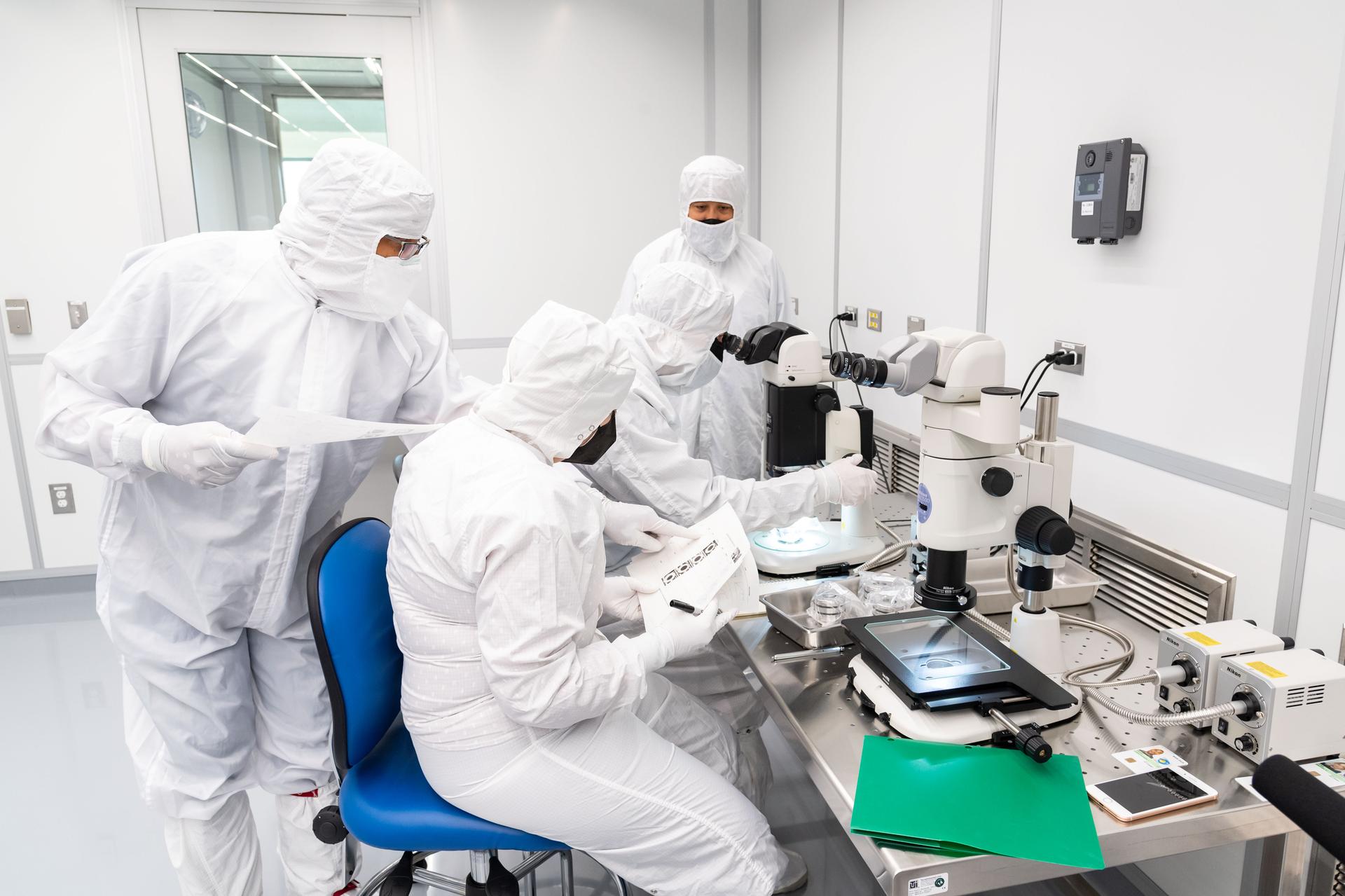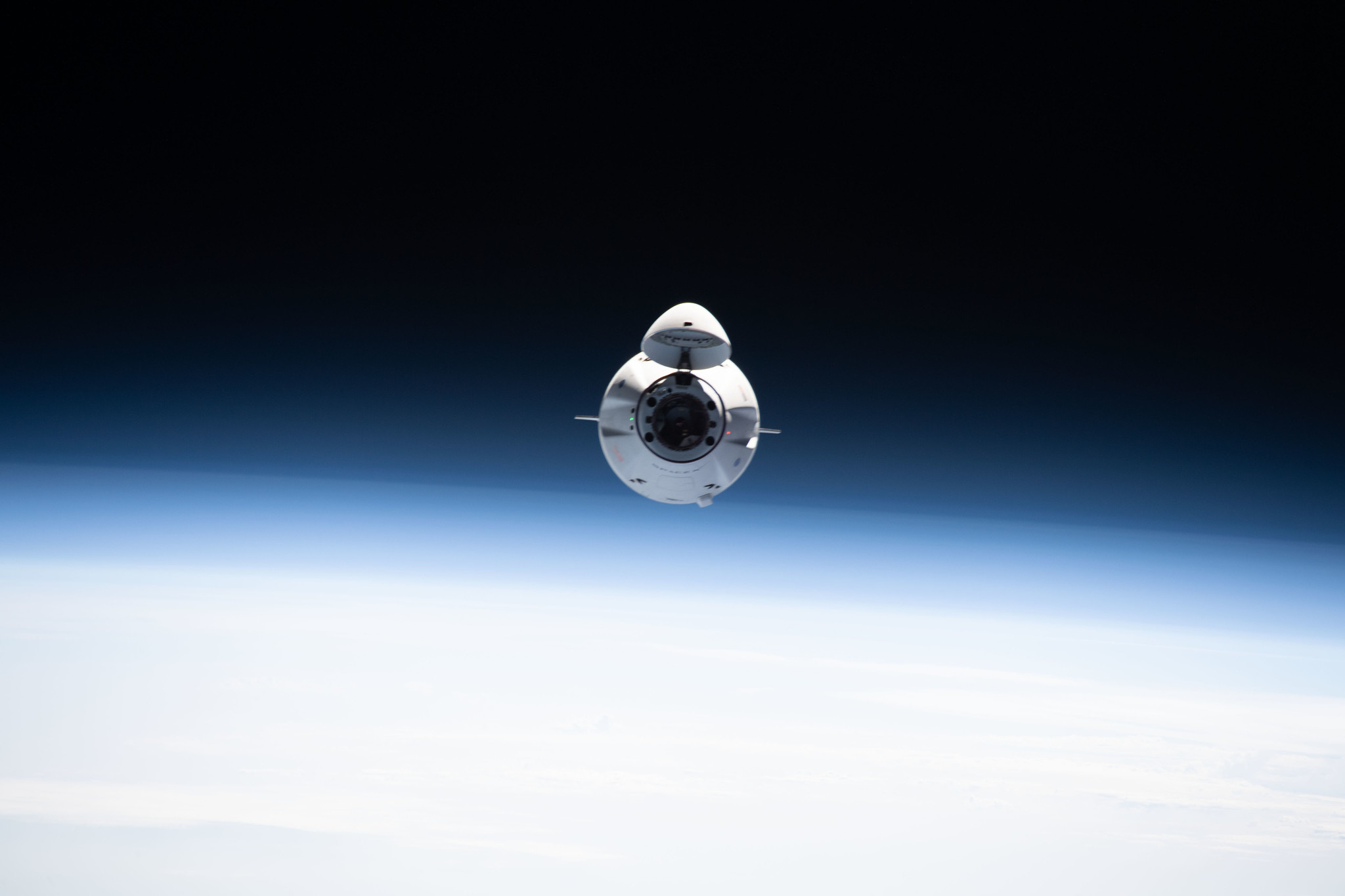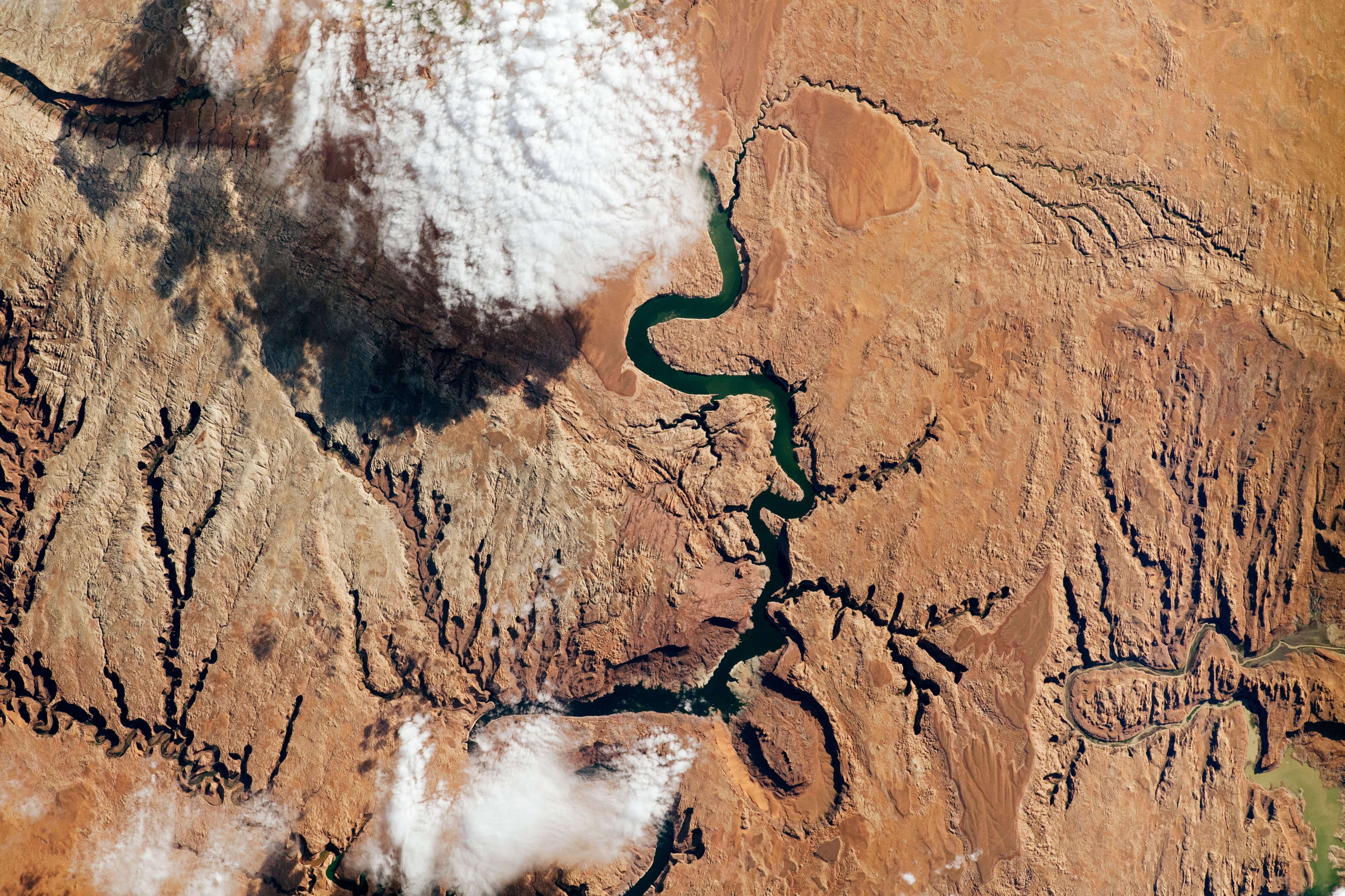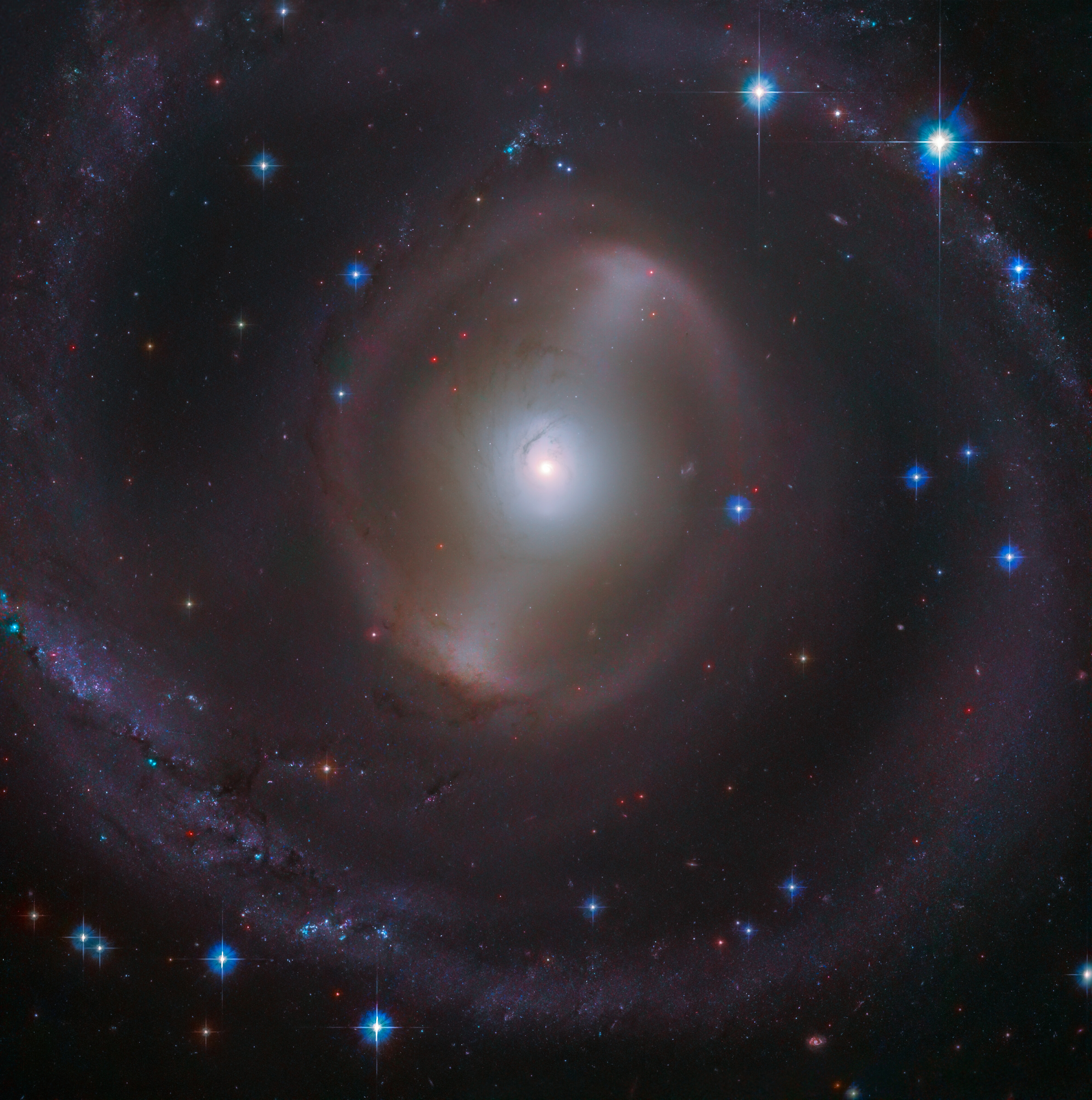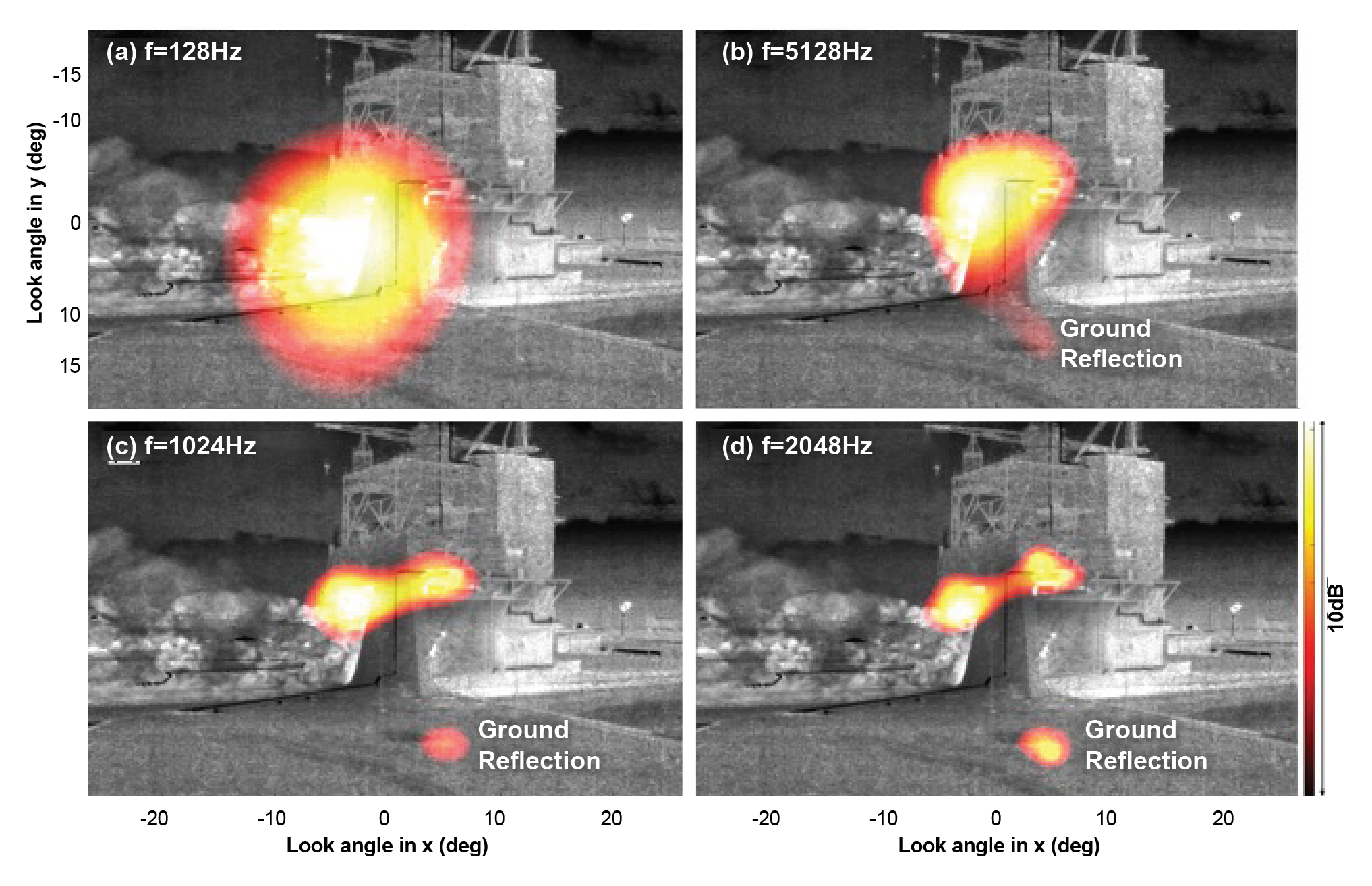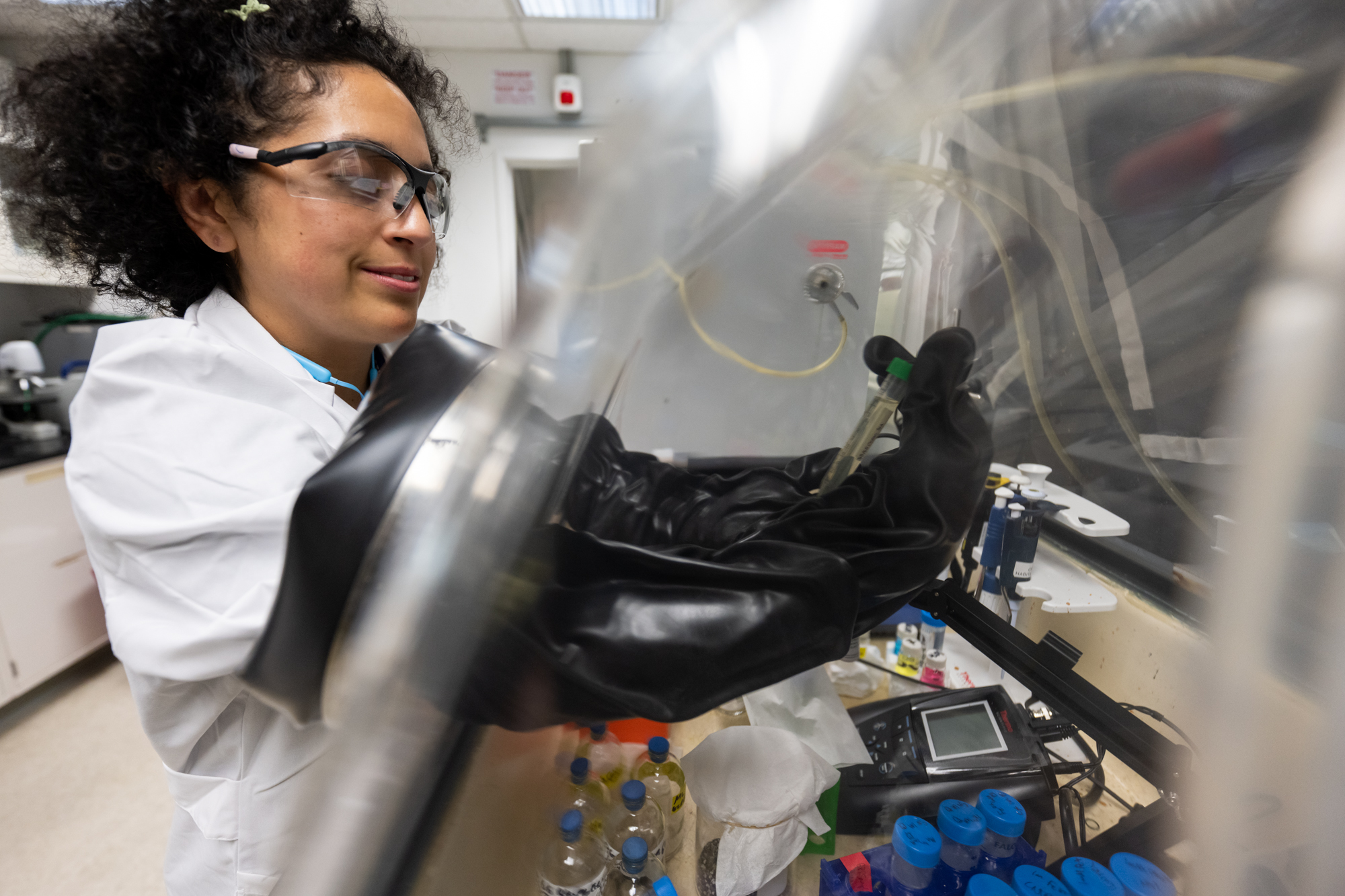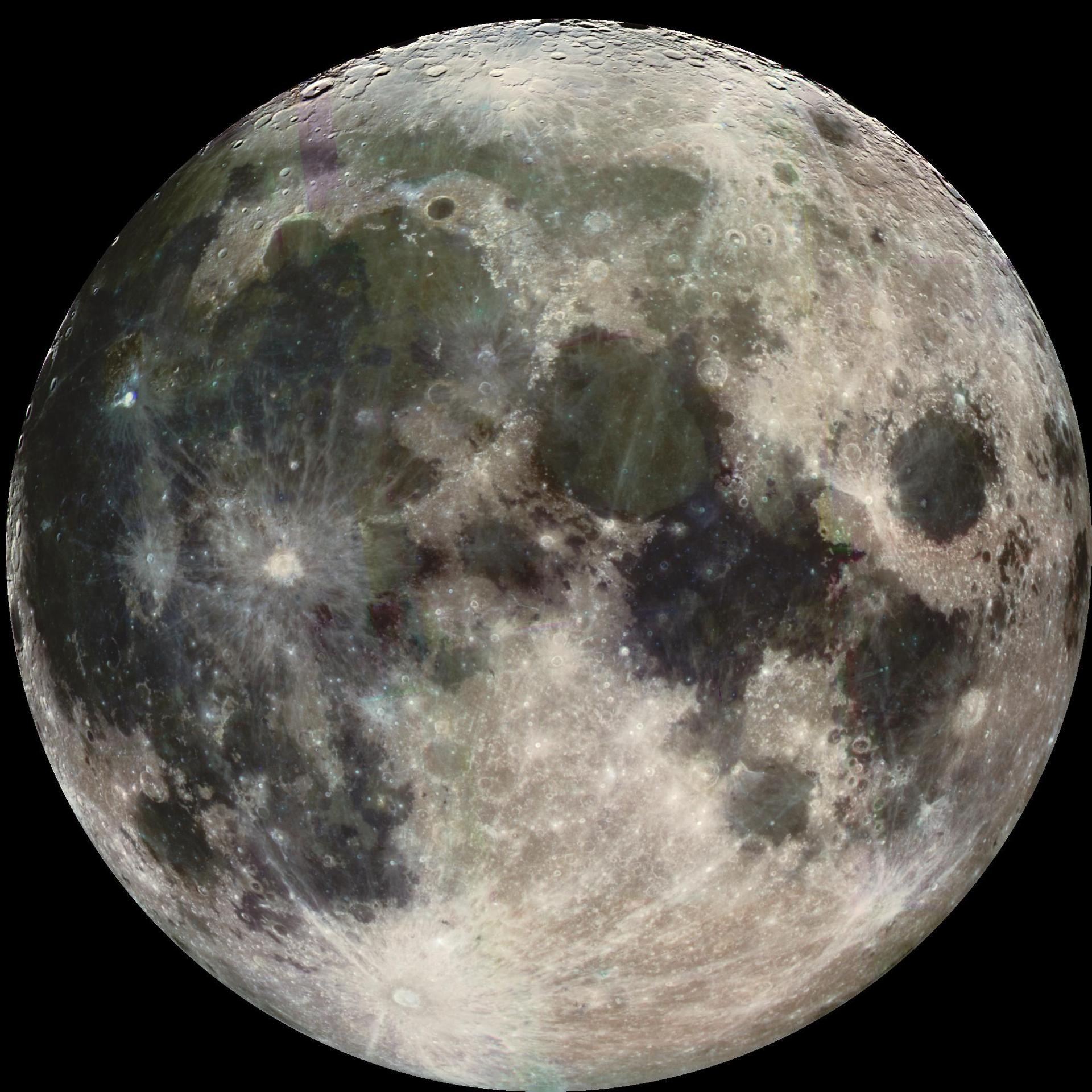
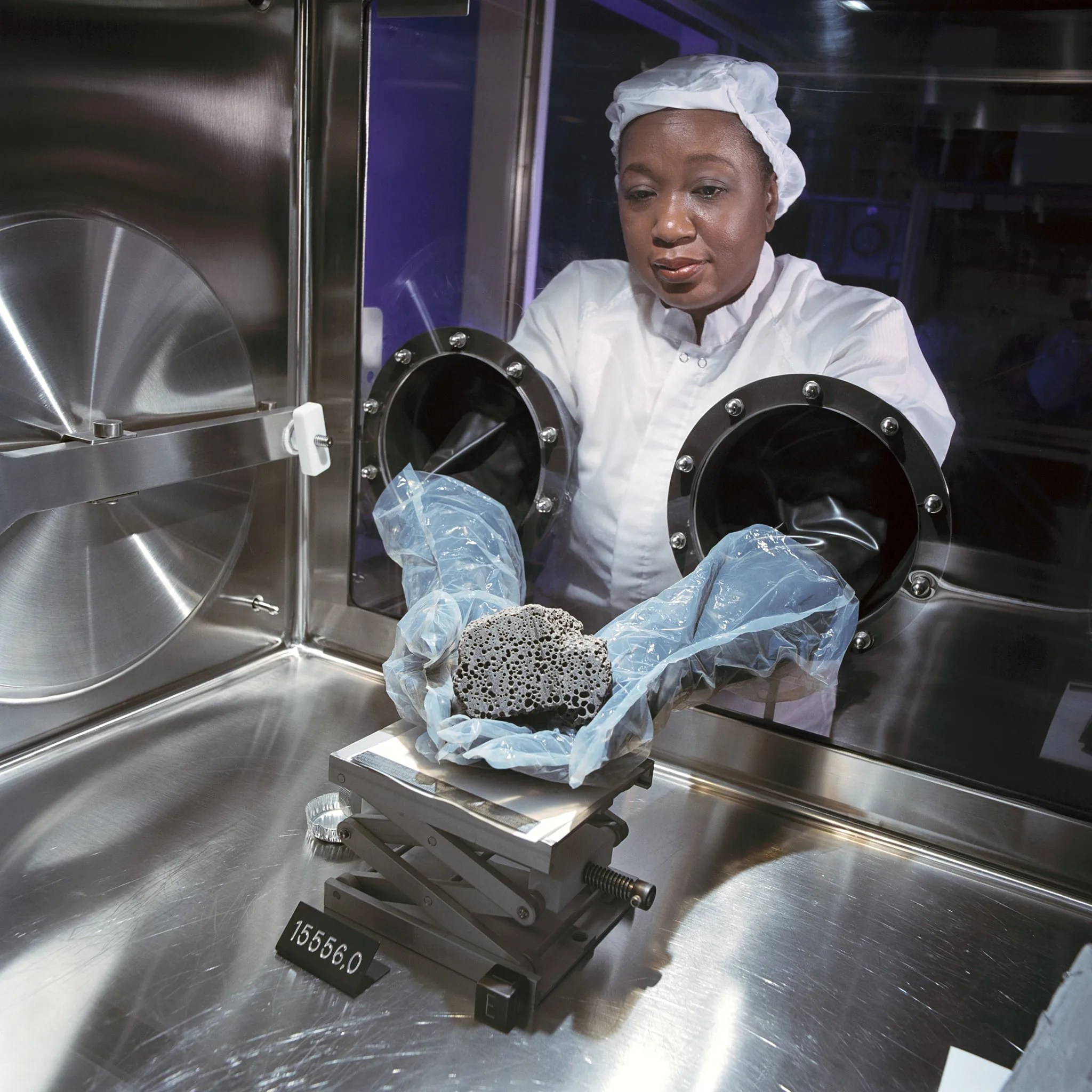
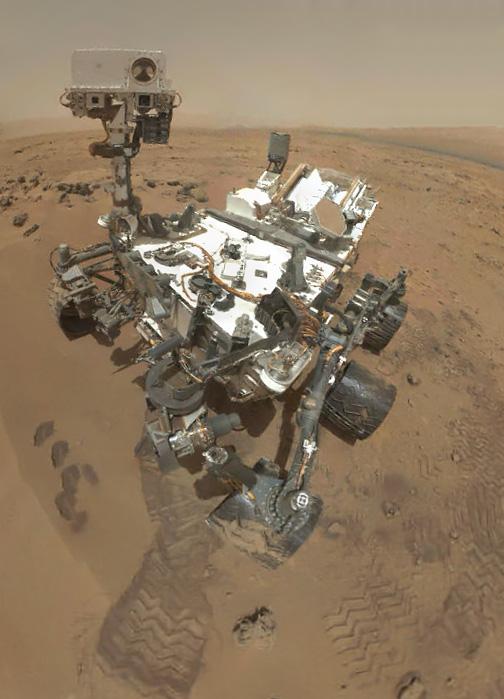
Astromaterials
The mission of Astromaterials Research and Exploration Science Division, or ARES, is to combine scientific and engineering expertise in order to advance human space exploration, to integrate terrestrial and planetary research, and to promote successful space missions by mitigating risk. Our people are the world's leading sample scientists and we curate the most extensive collection of extraterrestrial materials on Earth.
Inside world-class laboratories, scientists perform research on planetary materials and the space environment to investigate the origin and evolution of our Solar System, the universe, and the possibilities of how life might form on other planets.
Researchers participate in robotic planetary missions, support human spaceflight activities on board the International Space Station, and assist in the design of next-generation exploration spacecraft.
